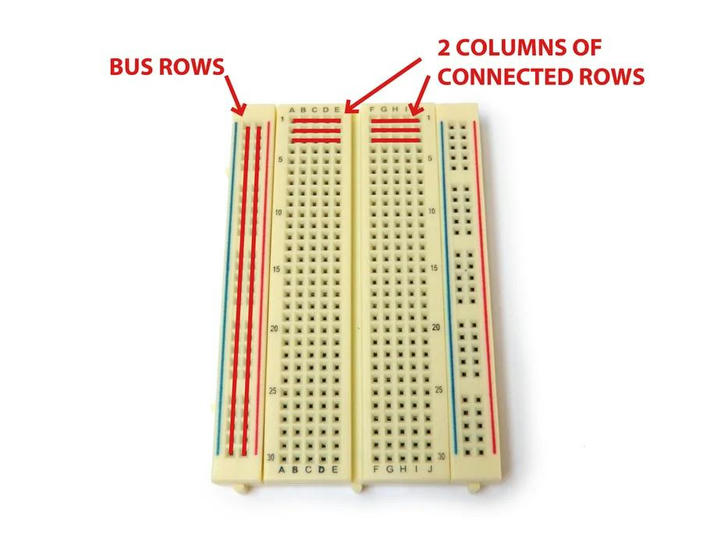Basic Electronics for Beginners in 20 Steps
Step 15: Breadboards

Breadboards are essential tools for prototyping electronic circuits. They have a grid of holes, organized into rows that are electrically connected.
At the center of the breadboard, you’ll find two sets of rows placed side by side. This design allows you to insert an integrated circuit (IC) right in the middle. Once inserted, each pin of the IC connects to a row of electrically continuous holes.
This layout allows you to easily assemble a circuit without needing to solder or twist wires together. You can simply place components into the rows that connect electrically.
On the sides of the breadboard, there are usually two continuous bus lines: one for power and the other for ground. By connecting your power and ground sources to these lines, you can access them from anywhere on the board.
